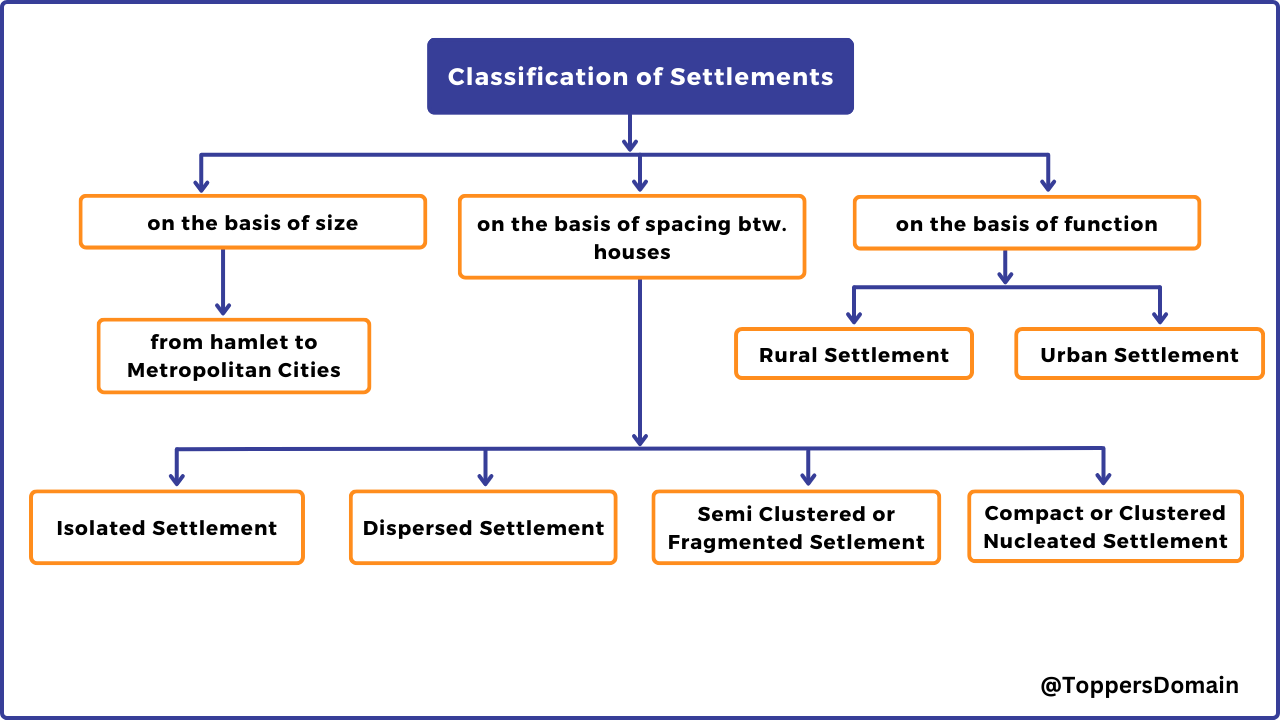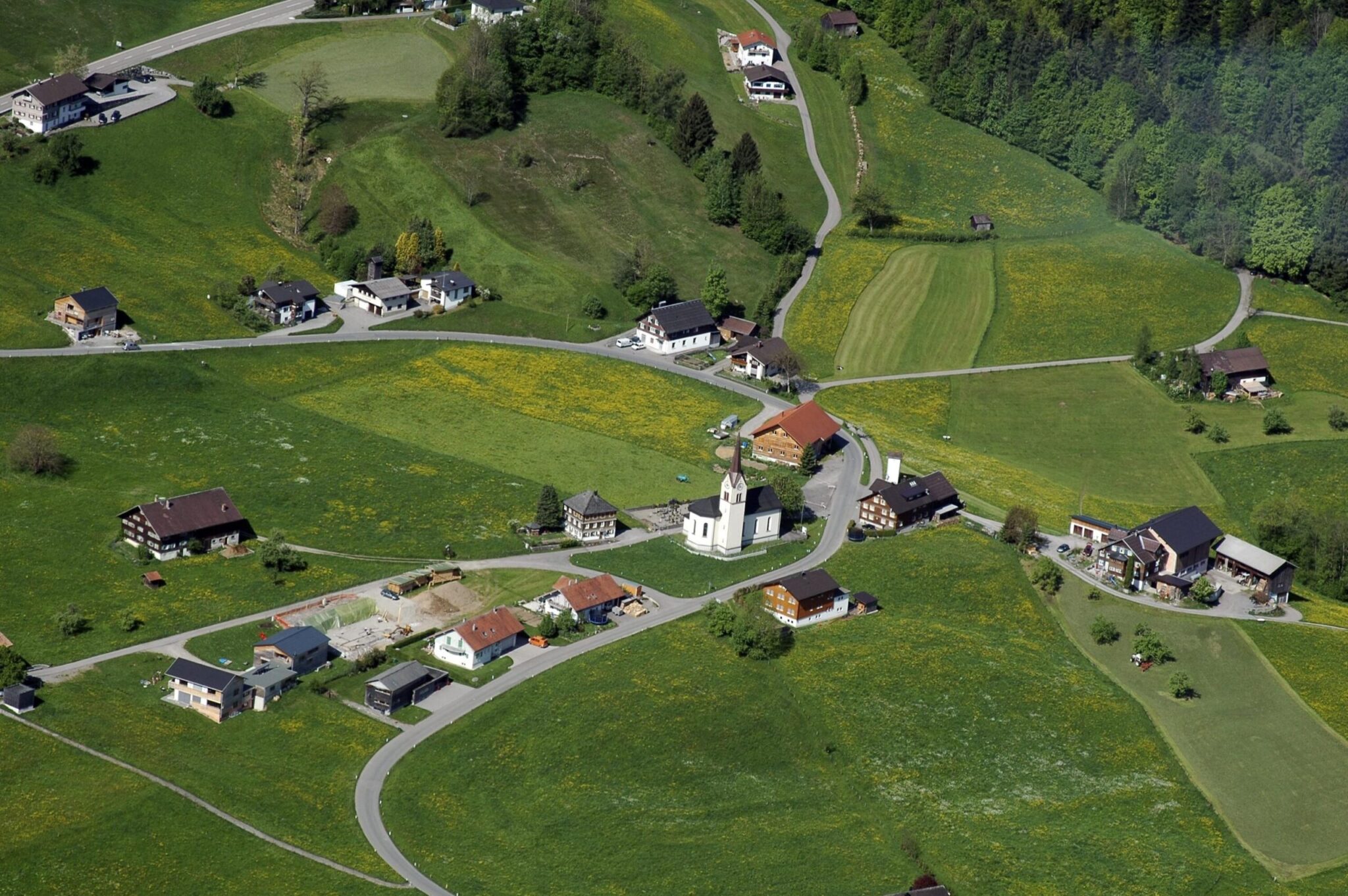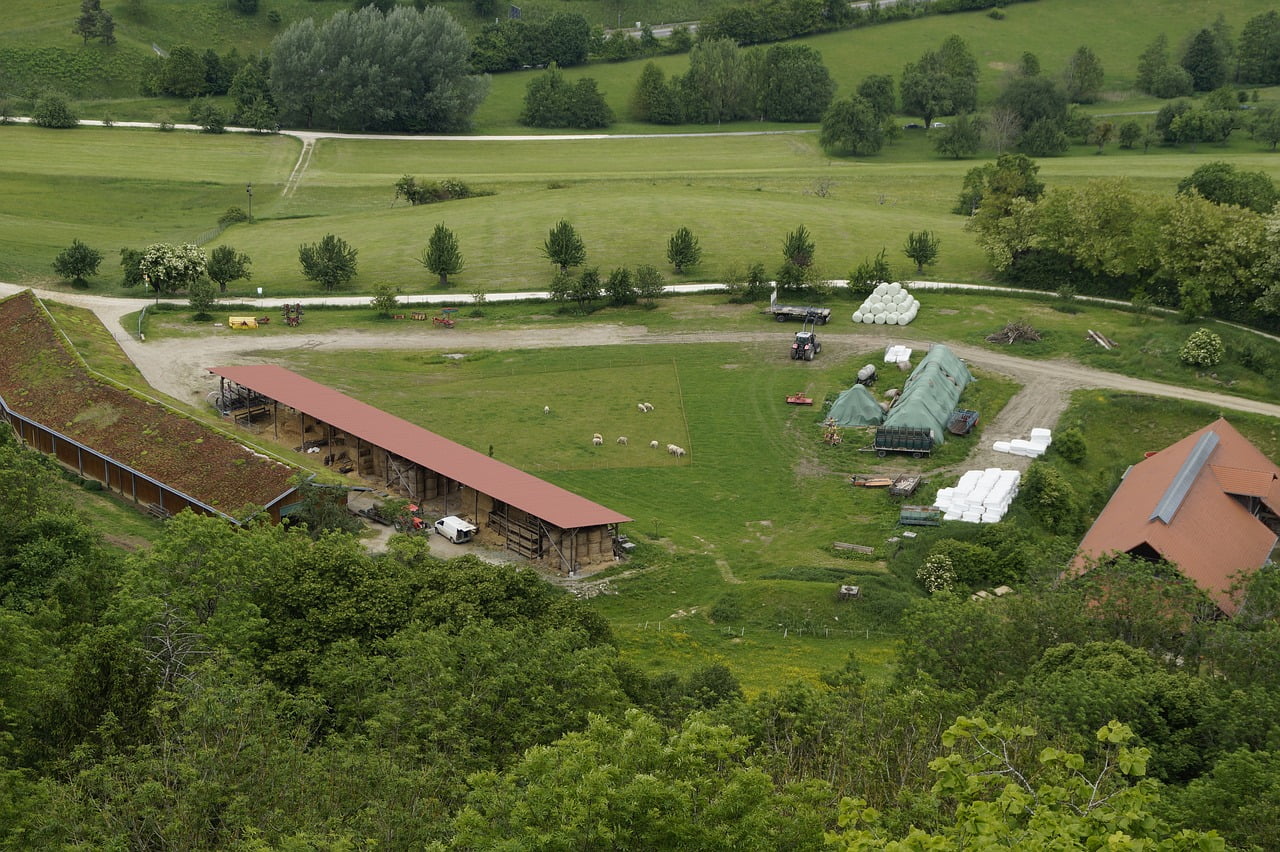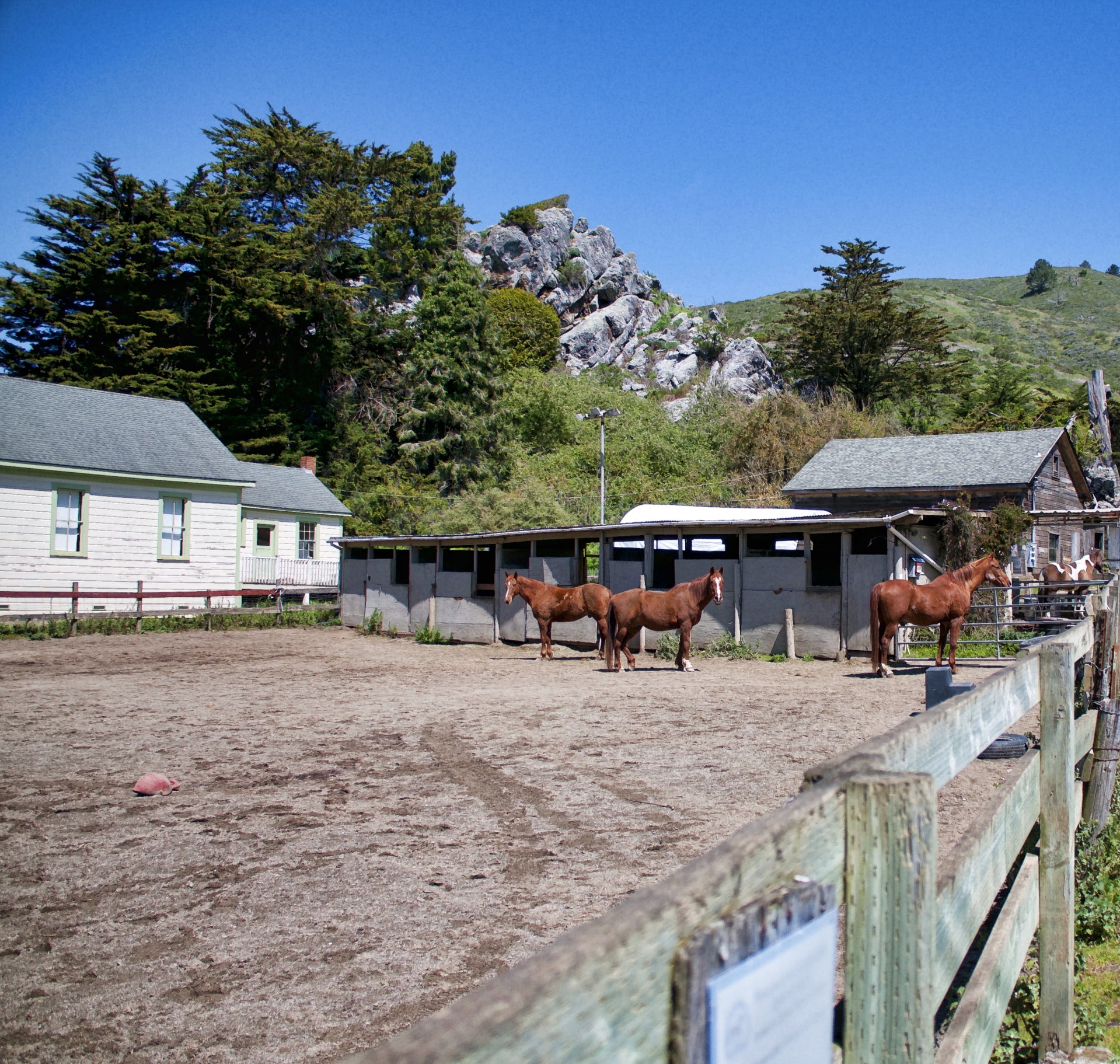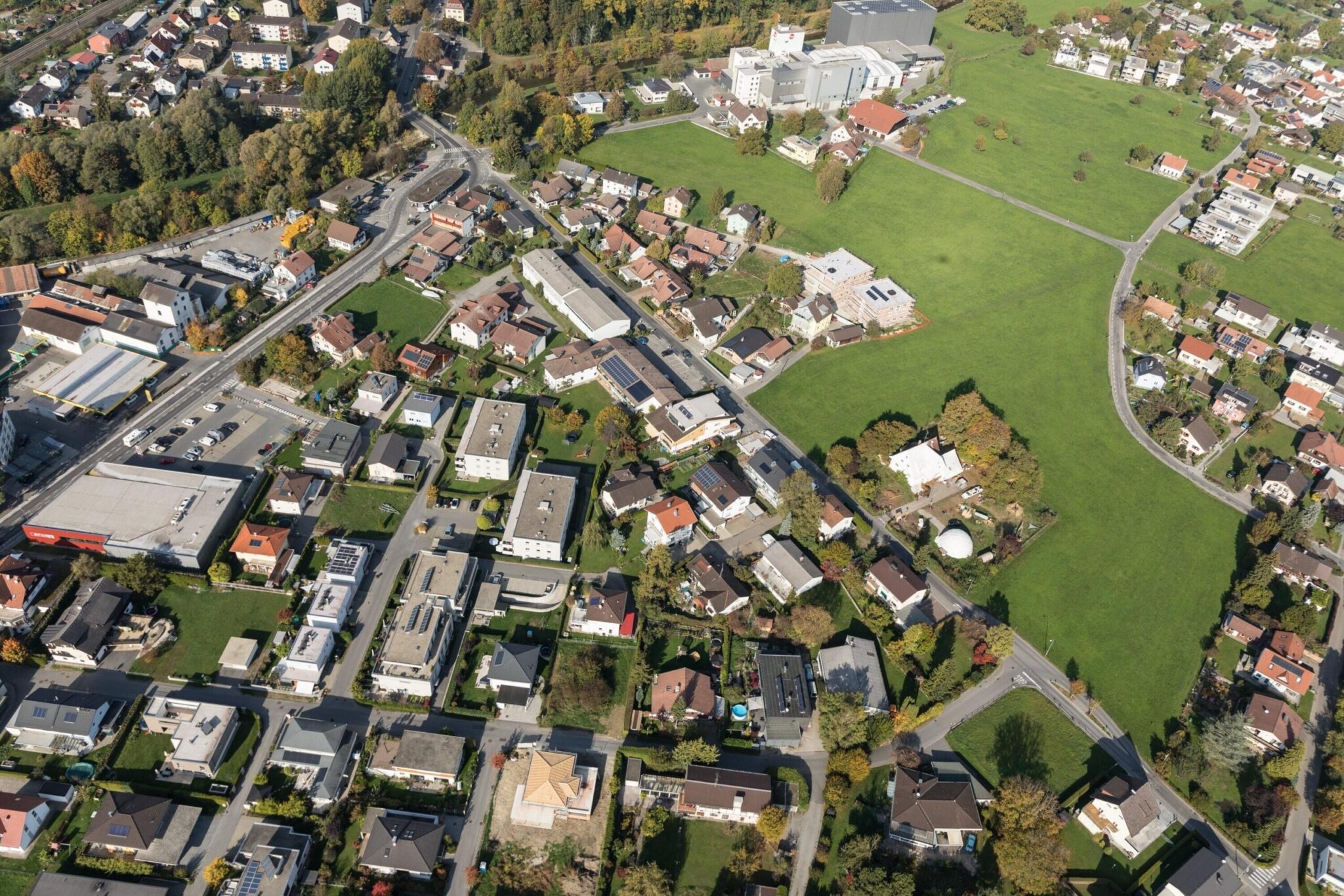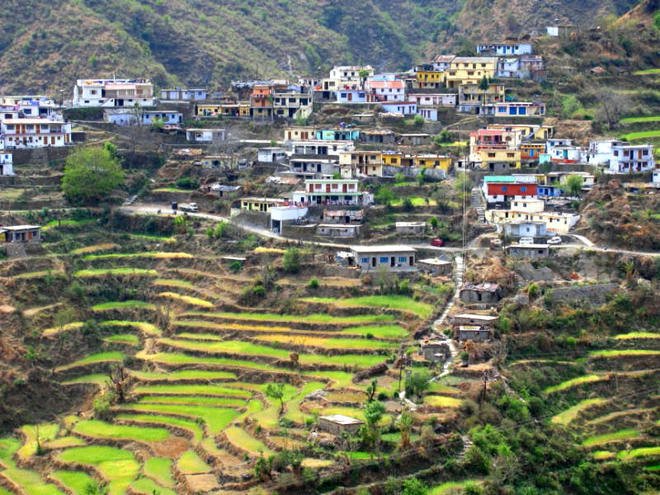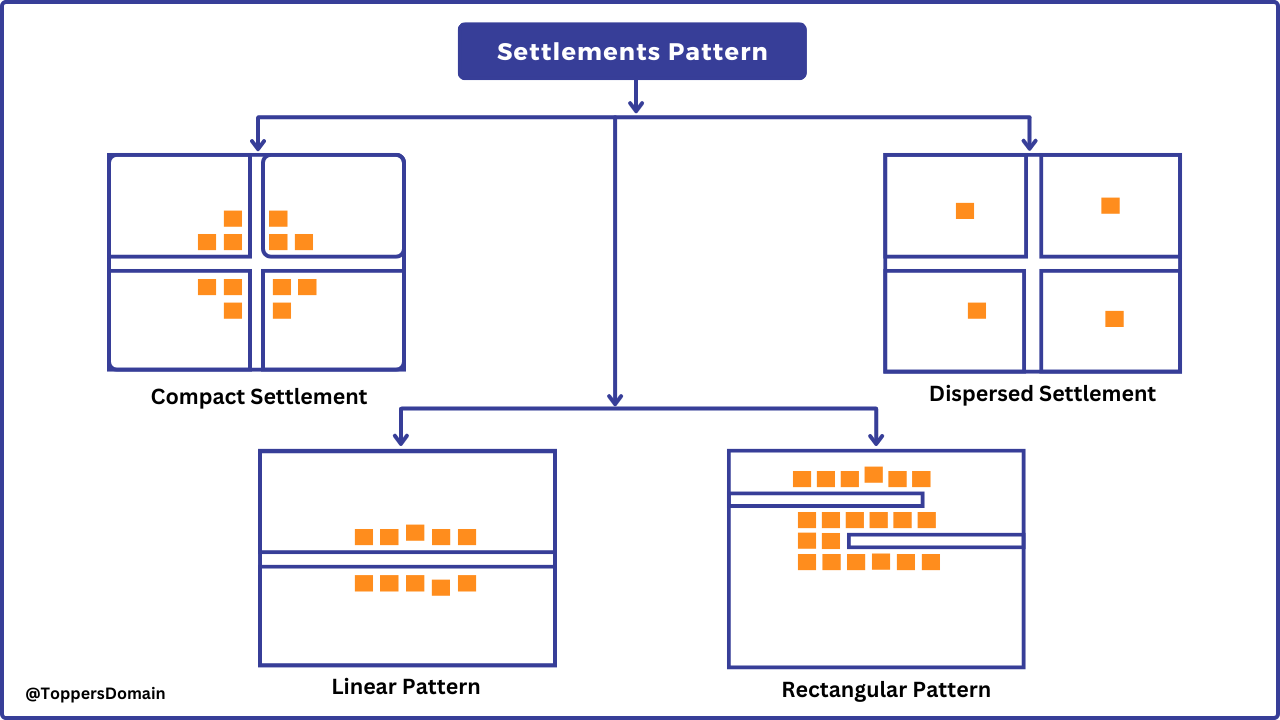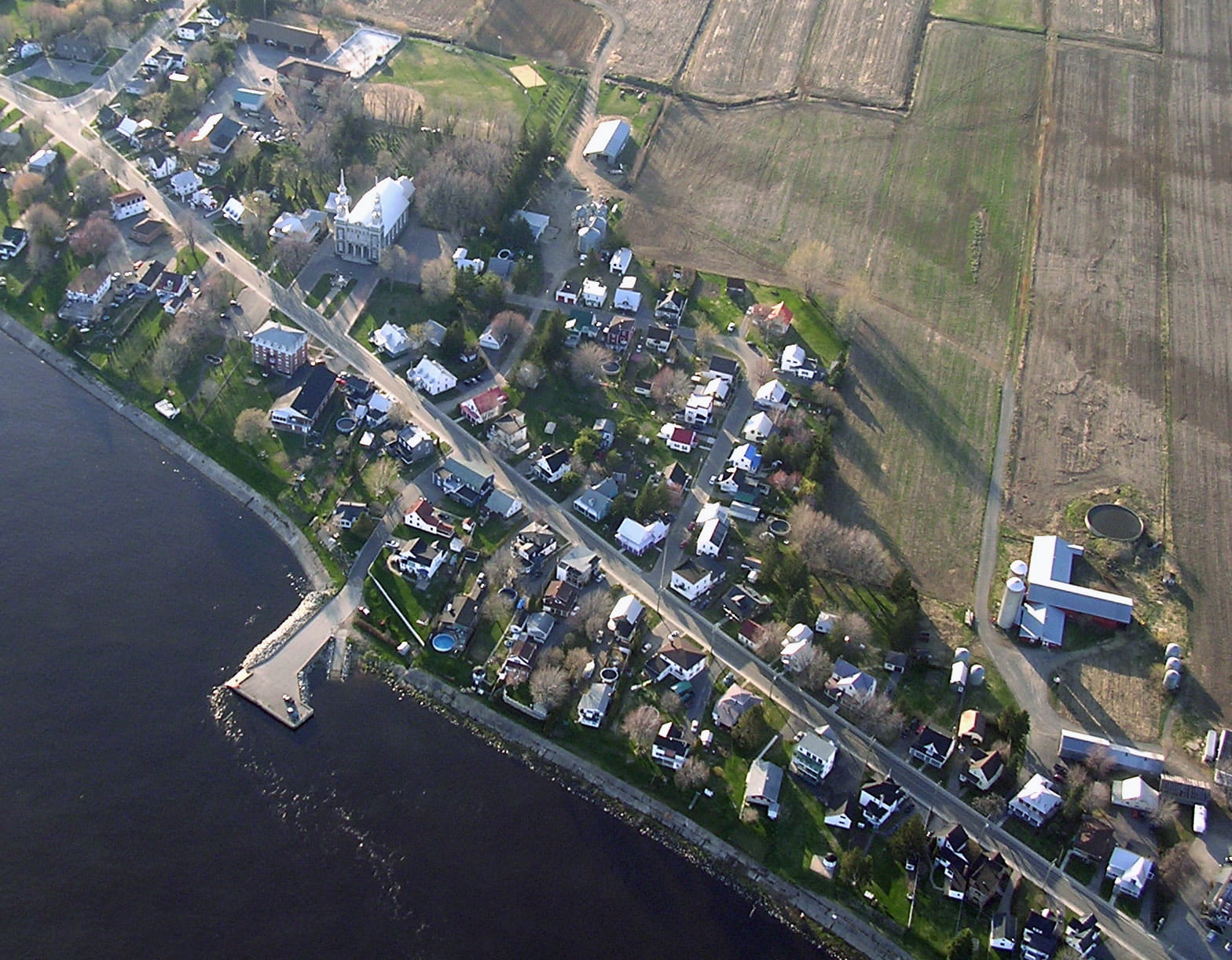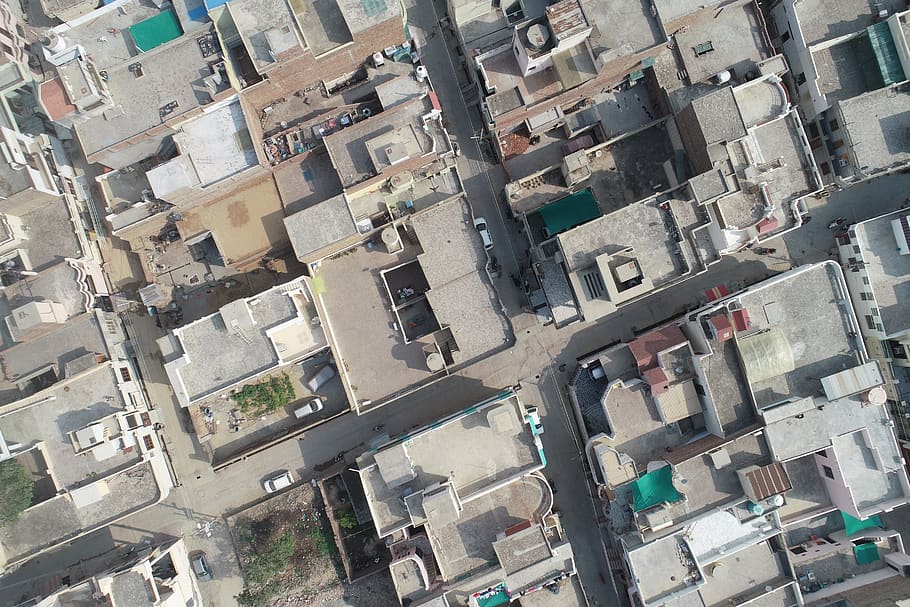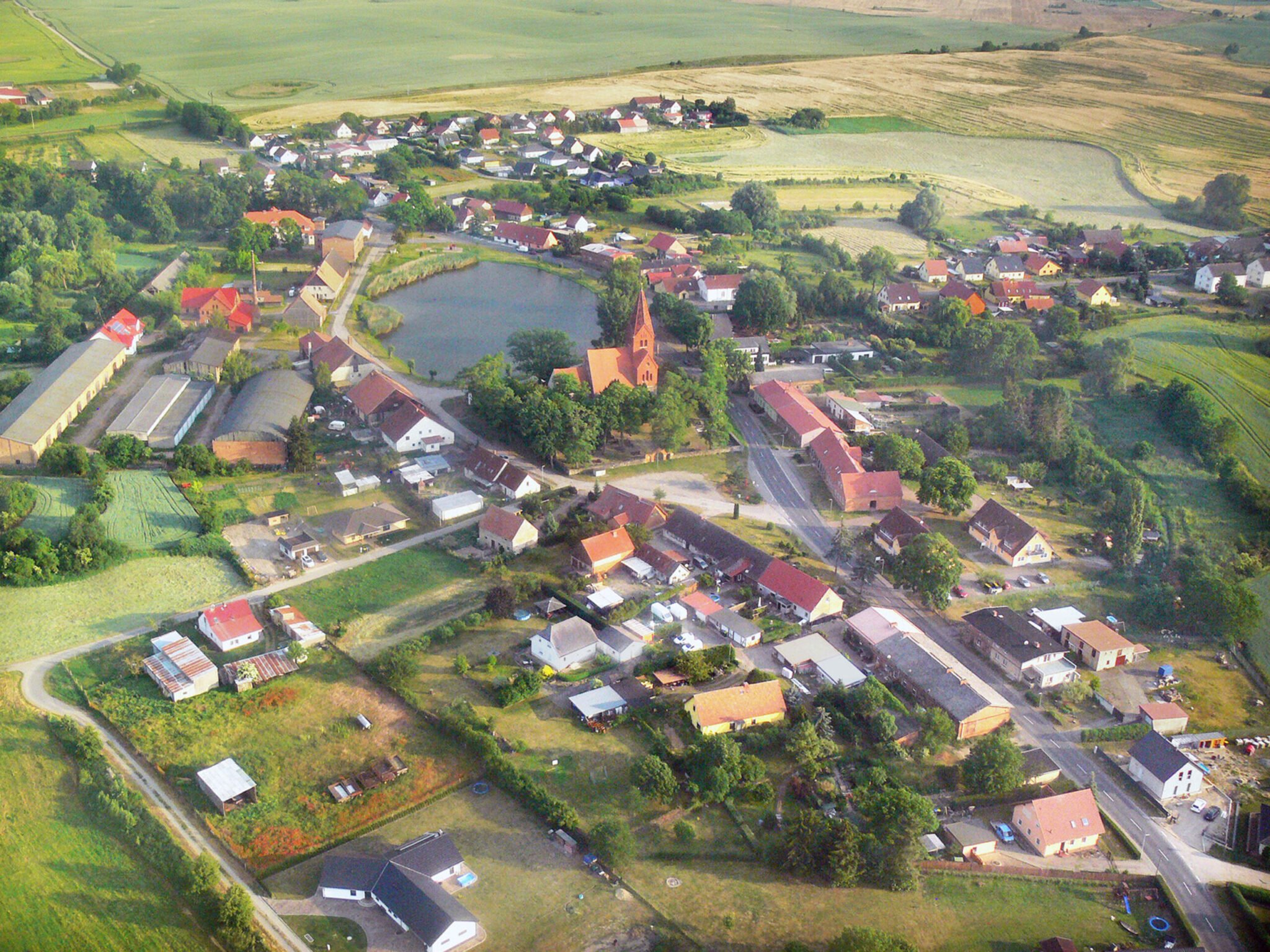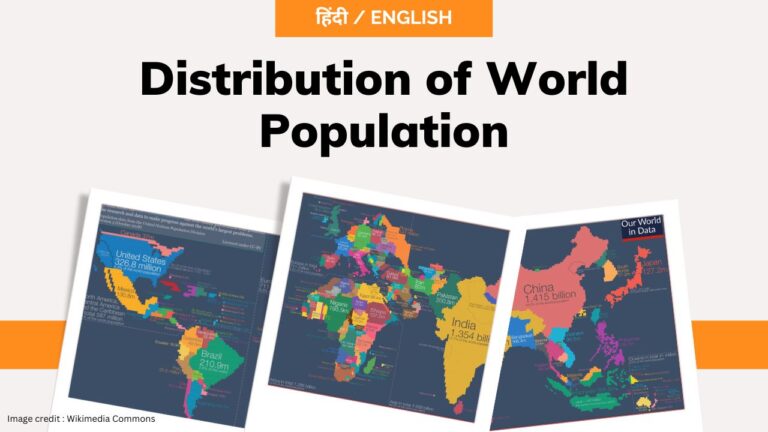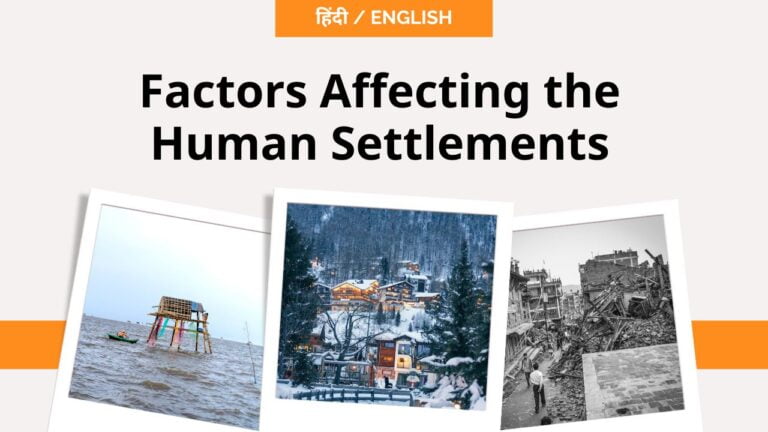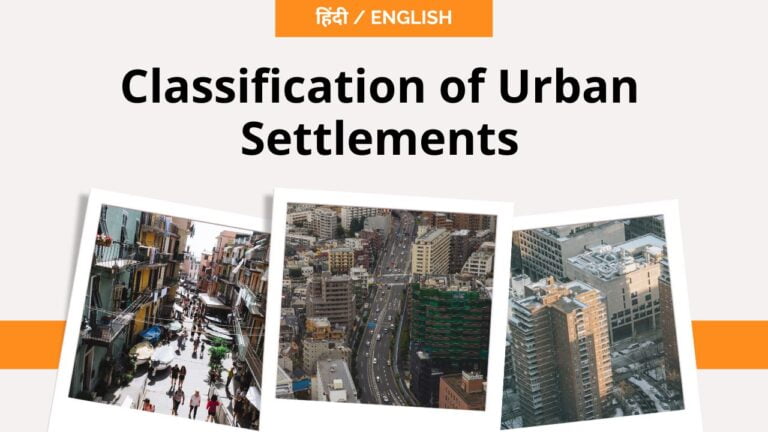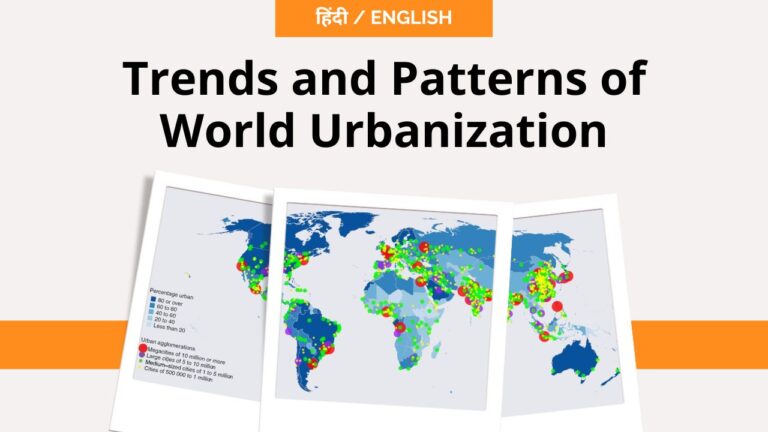Types and Patterns of Rural Settlements
Human Geography
Index
Types and Patterns of Rural Settlements
Rural settlements are defined as areas or regions with low population densities that are typically characterized by agricultural or natural resource-based economies and a traditional way of life.
The development of rural settlements is influenced by factors such as the natural environment, economic activities and cultural traditions.
According to nature of concentration these settlements are further classified as nucleated settlements or clustered settlements and dispersed settlements.
Types of Rural Settlements:
1- Dispersed Settlements
Dispersed settlements are characterized by widely spaced or scattered houses over a large area. These settlements may have small clusters of houses low population densities. There are often large areas of agricultural land surrounding the houses. These settlements are typically found in regions with ample natural resources and are commonly associated with agricultural activities, such as ranching, livestock farming and small-scale farming.
Dispersed settlements can take many different forms, such as farmsteads, homesteads and ranches.
2- Farmsteads and Homesteads
These are dispersed settlements, where individual households are located on isolated farms or agricultural estates. They are usually found in areas where agriculture is the primary economic activity. Farmsteads and homesteads are often characterized by large landholdings and a self-sufficient way of life. Farmsteads are common in areas such as the Midwest in the United States or rural areas of Europe.
3- Ranches
Ranches are large agricultural estates that are dependent on livestock farming, such as cattle or sheep. These settlements are often found in remote areas with large tracts of land available for grazing. Ranches are common in the western United States, Canada and Australia.
4- Nucleated Settlements
Nucleated settlements are characterized by a clustering of houses in a defined area, often arranged around a central point or market. They are usually found in areas with fertile soil, where agriculture is the main economic activity.
Nucleated settlements often have a strong sense of community and are characterized by shared amenities such as a church or temple.
These settlements are found in areas with a long history of settlement, such as Europe or parts of Asia.
These settlements can be further subdivided into two types: compact nucleated settlements and scattered nucleated settlements.
Nucleated settlements are also called clustered settlements. Clustered settlements can take many different forms, such as villages or hamlets.
5- Villages and Hamlets
These are small settlements with a population ranging from a few households to a few hundred people. They are often found in areas with low agricultural productivity, where people are engaged in subsistence farming or animal husbandry.
Hamlets and villages usually have basic amenities such as a primary school, a small clinic and a few shops.
Patterns of Rural Settlements
Various patterns of rural settlements are present across the world, which are as follows.
1- Linear Settlements
Linear settlements are characterized by a long and narrow arrangement of houses that is typically situated along a natural or man-made feature, such as a river, road or railway line, on canal edge or along levee. Such settlements are also found in a valley.
2- Rectangular Pattern
Such settlements are found in plain regions or wide intermontane valleys. The roads in the plains are rectangular and cross each other at right angles.
3- Star Settlements
Star settlements are characterized by a central point with radiating housing units arranged in a star-like pattern. Where several roads meet, star-shaped settlements emerge by the houses built along the roads.
4- Circular Settlements
Circular settlements are characterized by housing units arranged in a circular pattern around a central point. Circular villages grow around lakes, tanks and sometimes the village is organised in such a way that the central part remains accessible.
These settlements are commonly found in areas where community and social life are critical, such as traditional societies or religious centres.
5- Other Patterns
T-shaped rural settlements develop at tri-junctions of roads (T), while Y -shaped settlements develop as places where two roads meet at a third, and houses are built along these roads. Cruciform settlements grow on the cross-roads and houses spread in all the four directions. Where there is a bridge or a boating station, double village settlements develop on both banks of the river.
Conclusion :
In conclusion, rural settlements can be broadly classified into two types: dispersed and nucleated. These settlements exist in various patterns, such as linear, clustered, dispersed, star, and circular settlements. Understanding these types and patterns of rural settlements is essential for effective planning and development of rural areas, including infrastructure, housing, and development of economic activities.
Share
Other Topics
Unit - III


